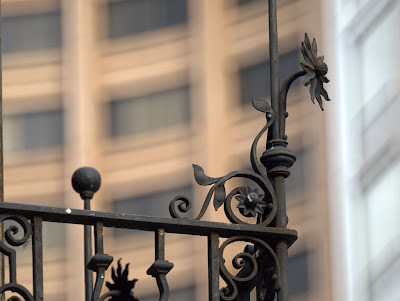Whenever you read some material on Depth of Field and the related aspects of photography, Circle of Confusion, Aperture Size, f/number, Lens Focal Length and Sensor Size, it goes ok for a few paragraphs and suddenly you have this MEGO phenomenon take over. As more senior photographers try to explain this DOF to newbies, things soon get worse.
If you can handle the equations and tables, then the following resources are good:
- Wikipedia: Depth of Field
- DOF Master: Depth of Field Calculator - also has links to interactive programs for Windows, PalmOS, iPhone, iTouch, web based tables.
- Freeware DOF Calculator for PocketPC
- Olympus Europe's hosted DOF Calculator (Pocket PC)
- Justin Snodgrass has a video called Depth of Field Explained. It's not bad - it's a video so you can pause, rewind and repeat.
- Photozone: Depth Of Field Calculator (Java applet)
- Has a simple visual comparison of DOF at f/2.8, f/5.6, f/11.
- Has a Java applet showing DOF and visual chart. You key in focal length, focussing distance, CoC
The depth-of-field is dependent on the OBJECT MAGNIFICATION ON THE FILM and the chosen aperture at a specific focal length.
Focal length affects perspective. See Photozone visual comparing 17mm, 35mm, 50mm, 100mm. Also read this discussion by P.A. van Walree
COC [Circle of Confusion] is not a function of format.
“But wait a minute,” you say, “why do some applets use format instead of sharpness?” These applets assume that in photography the subject will be framed the same regardless of format. In other words, to frame the subject from the same distance the larger format will need a longer focal length lens, or the smaller format will need to be moved further away from the subject (or vice-versa).
Photozone DOF Preview has an interactive visual of how pressing the DOF preview looks like when your shooting aperture is less than you viewing aperture.
DOF in the context of different digital sensor sizes
DOF is not difficult to explain for one camera. It gets more complicated to explain when you compare a 35mm film camera against say a Four Thirds Sensor camera.
- For the same optical focal length lens on two different cameras, the lenses don't have a different DOF. The DOF is the same.
- Take a 100mm lens that would fit a 35mm film camera. Fit it on a film camera and then fit it on an Four Thirds Sensor camera. If the lens fits either, you still have a 100mm lens. Assume both cameras can shoot with the lens.
- But because the Four Thirds sensor is 2x smaller, it only sees half the image. That's why they call it a Crop Factor. Say you can see a face occupying the full frame on the film camera. With the Four Thirds sensor sensor, being smaller, you can only see the fellow's hair and eyes.
- What this means is you appear to be "closer" to the person even though you are standing at the same distance, same lens. But your camera is different. At this point, the DOF is the same.
- So, what happens? In order to get the full face into the picture, you have to use your legs and walk backwards.
- Now that you have walked backwards from the subject, you are not comparing apples to apples anymore. You are comparing the Four Thirds Sensor camera, standing further back vs the film camera standing nearer to the subject. You have changed your camera to subject distance.
- DOF is based on distance between you to the subject. So, yes, in this case the Four Thirds Sensor camera, appears to have a deeper DOF compared to the film camera. Not because the lens is different, not because the camera sensor size is different, but because you used your legs to walk back and you changed the distance to the subject.
Sometimes, you take the other tack and just say - heck, here is a camera, let's go out and shoot and see.
(Photo was shot using 250mm f/5.6 CAT lens mounted on a FourThirds sensor camera - Olympus E-510)
(Photo was shot using 250mm f/5.6 CAT lens mounted on a FourThirds sensor camera - Olympus E-510)


No comments:
Post a Comment